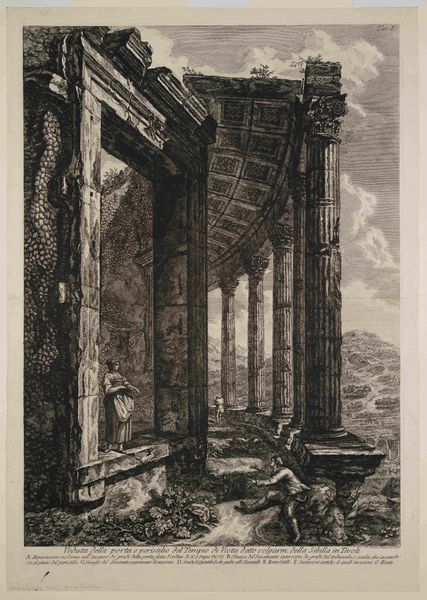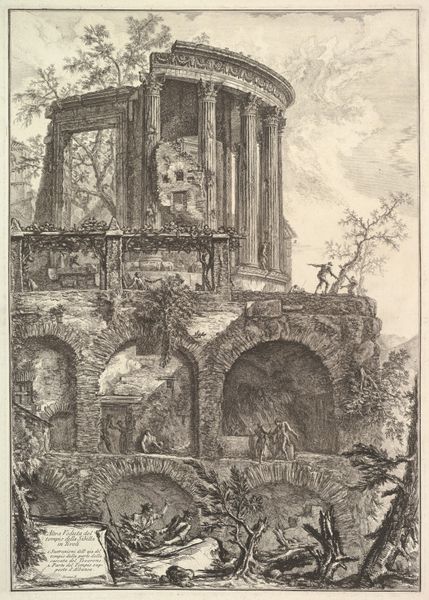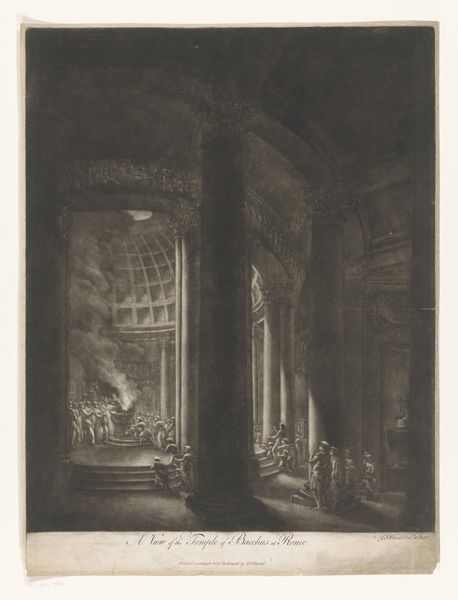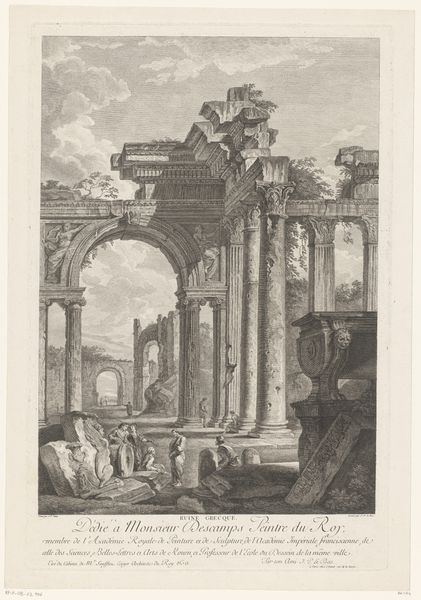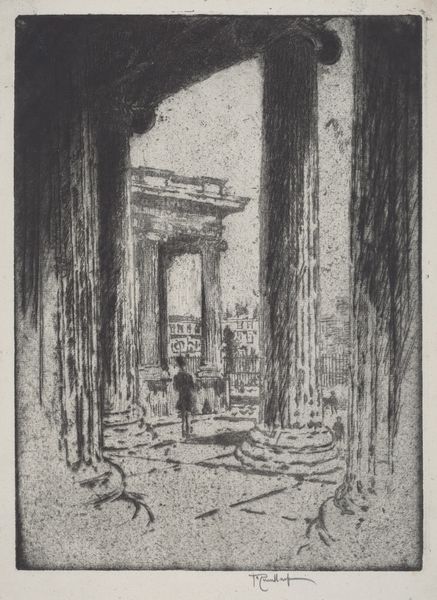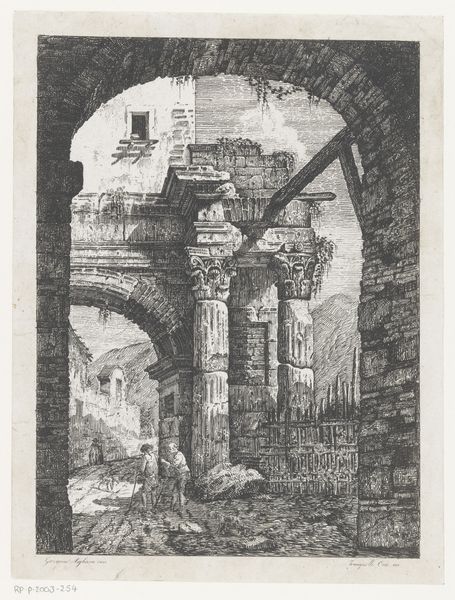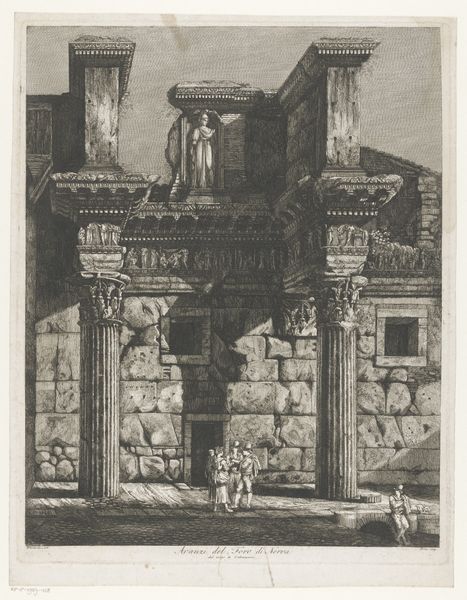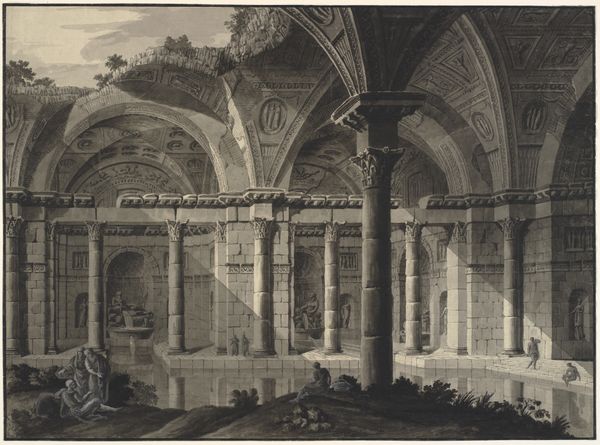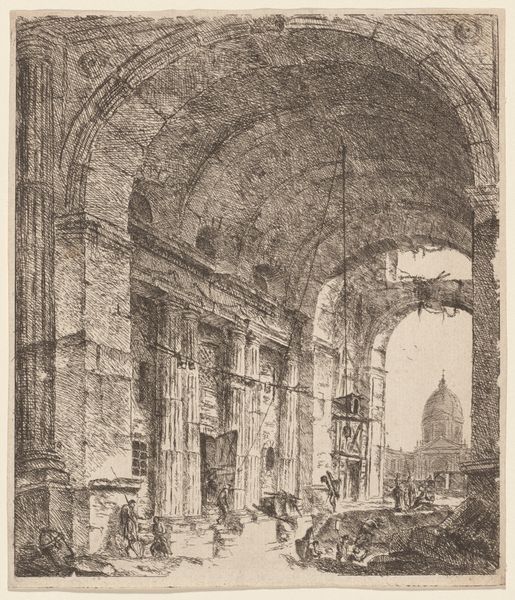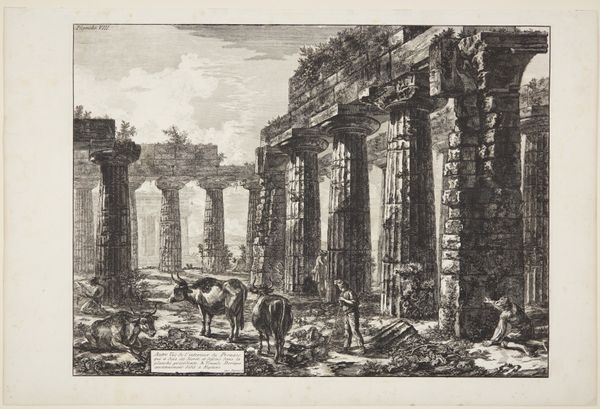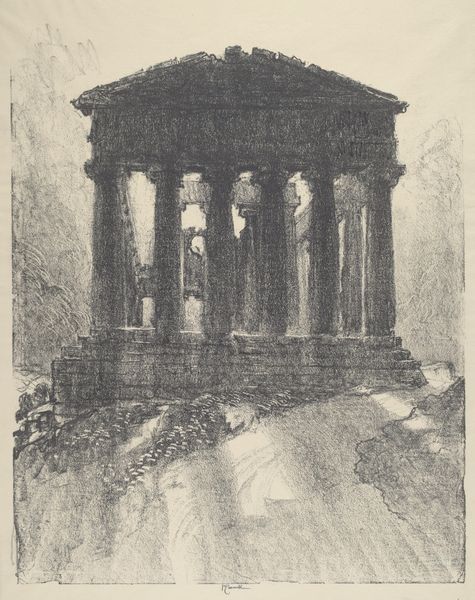
View of the Door and Peristyle of the Temple of Vesta 1780
0:00
0:00
drawing, print, etching, paper, architecture
#
drawing
#
neoclacissism
# print
#
etching
#
landscape
#
paper
#
ancient-mediterranean
#
italy
#
architecture
Dimensions: 680 × 479 mm (plate); 787 × 564 mm (sheet)
Copyright: Public Domain
Editor: So, this is Francesco Piranesi’s "View of the Door and Peristyle of the Temple of Vesta," an etching from 1780. The ruins are captivating; there's a sense of decay, but also of enduring strength. What strikes you about it? Curator: I see more than just a picturesque ruin. Piranesi wasn't simply documenting architecture; he was framing a dialogue between the grandeur of a fallen empire and the contemporary gaze. Notice how the human figures are dwarfed by the scale of the architecture. What does that say about power dynamics and the individual's place within history? Editor: That’s interesting. I was focused on the romantic aspect, the sublime. But what you’re saying makes me consider it as a commentary on how the past shapes the present. Are there any specific philosophical or theoretical concepts that you see at play here? Curator: Absolutely. Think about Foucault's concept of power as being dispersed and embedded within social structures. This image, in its meticulous detail of architectural power, suggests how those structures endure and continue to influence even in a state of ruin. Also, consider the gendered element. Why is a woman depicted alone within the ruin? Does it connect with the Romantic Era interest in ancient female leaders? Editor: I never considered the gender implications of the figure within the temple's ruin. It really brings the entire image into a new perspective. Thank you! Curator: Indeed, art becomes potent when we question and connect its elements with broader dialogues that involve philosophy, feminism, and sociology, just to name a few. The possibilities for deeper insights become infinite.
Comments
No comments
Be the first to comment and join the conversation on the ultimate creative platform.
